I am exploring COM objects in PowerShell. Found this great recipe, provided by Jaap Brasser, which is easy to run and answered my question.
Get a list of all Com objects available Posted by Jaap Brasser on June 27, 2013
Note: This tip requires PowerShell 2.0 or above.
Recently a question was posted on the PowerShell.com forums: How to
get a full list of available ComObjects? This tip will show how fetch
all of them from the registry.
Here is the code that we can use to generate this list:
Get-ChildItem HKLM:\Software\Classes -ErrorAction SilentlyContinue | Where-Object {
$_.PSChildName -match '^\w+\.\w+$' -and (Test-Path -Path "$($_.PSPath)\CLSID")
} | Select-Object -ExpandProperty PSChildName
The first Cmdlet reads out a complete list of values from
HKLM:\Software\Classes and then verifies if the following two
conditions are true:
- Does the object match the naming convention for a ComObject?
Does the registry key have a CLSID folder? Every registered ComObject should have a CLSID as a unique identifier. An example of
the output generated by this command is as follows:
AccClientDocMgr.AccClientDocMgr
AccDictionary.AccDictionary
Access.ACCDAExtension
Access.ACCDCFile
Access.ACCDEFile
Access.ACCDTFile
Access.ACCFTFile
Access.ADEFile
To make the process of discovering ComObject easier the following
function can be used.
function Get-ComObject {
param(
[Parameter(Mandatory=$true,
ParameterSetName='FilterByName')]
[string]$Filter,
[Parameter(Mandatory=$true,
ParameterSetName='ListAllComObjects')]
[switch]$ListAll
)
$ListofObjects = Get-ChildItem HKLM:\Software\Classes -ErrorAction SilentlyContinue | Where-Object {
$_.PSChildName -match '^\w+\.\w+$' -and (Test-Path -Path "$($_.PSPath)\CLSID")
} | Select-Object -ExpandProperty PSChildName
if ($Filter) {
$ListofObjects | Where-Object {$_ -like $Filter}
} else {
$ListofObjects
}
}
This function is available in the TechNet Script Gallery:
http://gallery.technet.microsoft.com/Get-ComObject-Function-to-50a92047

